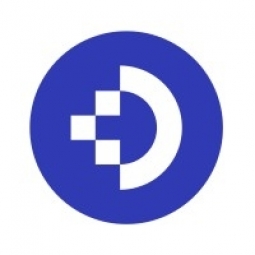下载PDF
Riegele Brewery Streamlines Operations with DocuWare
技术
- 应用基础设施与中间件 - 数据交换与集成
- 功能应用 - 企业资源规划系统 (ERP)
适用行业
- 零售
适用功能
- 采购
- 物流运输
用例
- 供应链可见性(SCV)
- 库存管理
服务
- 系统集成
- 软件设计与工程服务
挑战
Riegele 是一家位于德国奥格斯堡的家族酿酒厂,面临着管理大量纸质文件的挑战。该公司希望减少每年合规、无篡改地归档约 80,000 张送货单和 12,500 张收货发票所需的时间和精力。该公司正在寻找一种能够提供良好性价比且易于使用和设置的解决方案。该解决方案还需要与其现有的 SAP ERP 系统无缝集成。
关于客户
Riegele 是一家家族经营的啤酒厂,总部位于德国奥格斯堡。该公司自 1884 年起开始运营,是世界上最古老的啤酒厂之一。Riegele 的产品经常获得国际奖项。除了传统的啤酒特色产品外,该啤酒厂还生产现代精酿啤酒、销售自家泉水矿泉水并生产各种软饮料。公司的管理层在 Riegele 借助透明的流程和现代 IT(包括文档管理系统)组织所有这些活动。
解决方案
Riegele 实施了 DocuWare 的文档管理系统 (DMS) 来管理纸质文档。DMS 最初是在采购和财务会计部门引入的,目前所有部门约有 50 名员工使用 DocuWare。现场工作人员和附近的物流中心都可以访问所有地点的中央文档池。经过认证的 Connect to SAP 接口确保 DMS 和 ERP 解决方案之间的无缝连接。这是由一家专门从事 DocuWare SAP 集成的咨询公司实施的。如今,DocuWare 既用于交货单,也用于验证收到的发票。总的来说,数字档案包含大约 840,000 份文件,其中大部分是多页文件。司机在 Mowis 移动商品管理系统中每天创建大约 300 张交货单,并在交货结束时通过对接站发送到 SAP。DocuWare 接口以电子方式索引和归档所有文档,并以防篡改和保证合规的方式存储它们。
运营影响
数量效益
相关案例.

Case Study
Improving Production Line Efficiency with Ethernet Micro RTU Controller
Moxa was asked to provide a connectivity solution for one of the world's leading cosmetics companies. This multinational corporation, with retail presence in 130 countries, 23 global braches, and over 66,000 employees, sought to improve the efficiency of their production process by migrating from manual monitoring to an automatic productivity monitoring system. The production line was being monitored by ABB Real-TPI, a factory information system that offers data collection and analysis to improve plant efficiency. Due to software limitations, the customer needed an OPC server and a corresponding I/O solution to collect data from additional sensor devices for the Real-TPI system. The goal is to enable the factory information system to more thoroughly collect data from every corner of the production line. This will improve its ability to measure Overall Equipment Effectiveness (OEE) and translate into increased production efficiencies. System Requirements • Instant status updates while still consuming minimal bandwidth to relieve strain on limited factory networks • Interoperable with ABB Real-TPI • Small form factor appropriate for deployment where space is scarce • Remote software management and configuration to simplify operations

Case Study
How Sirqul’s IoT Platform is Crafting Carrefour’s New In-Store Experiences
Carrefour Taiwan’s goal is to be completely digital by end of 2018. Out-dated manual methods for analysis and assumptions limited Carrefour’s ability to change the customer experience and were void of real-time decision-making capabilities. Rather than relying solely on sales data, assumptions, and disparate systems, Carrefour Taiwan’s CEO led an initiative to find a connected IoT solution that could give the team the ability to make real-time changes and more informed decisions. Prior to implementing, Carrefour struggled to address their conversion rates and did not have the proper insights into the customer decision-making process nor how to make an immediate impact without losing customer confidence.

Case Study
Digital Retail Security Solutions
Sennco wanted to help its retail customers increase sales and profits by developing an innovative alarm system as opposed to conventional connected alarms that are permanently tethered to display products. These traditional security systems were cumbersome and intrusive to the customer shopping experience. Additionally, they provided no useful data or analytics.

Case Study
Ensures Cold Milk in Your Supermarket
As of 2014, AK-Centralen has over 1,500 Danish supermarkets equipped, and utilizes 16 operators, and is open 24 hours a day, 365 days a year. AK-Centralen needed the ability to monitor the cooling alarms from around the country, 24 hours a day, 365 days a year. Each and every time the door to a milk cooler or a freezer does not close properly, an alarm goes off on a computer screen in a control building in southwestern Odense. This type of alarm will go off approximately 140,000 times per year, equating to roughly 400 alarms in a 24-hour period. Should an alarm go off, then there is only a limited amount of time to act before dairy products or frozen pizza must be disposed of, and this type of waste can quickly start to cost a supermarket a great deal of money.

Case Study
Supermarket Energy Savings
The client had previously deployed a one-meter-per-store monitoring program. Given the manner in which energy consumption changes with external temperature, hour of the day, day of week and month of year, a single meter solution lacked the ability to detect the difference between a true problem and a changing store environment. Most importantly, a single meter solution could never identify root cause of energy consumption changes. This approach never reduced the number of truck-rolls or man-hours required to find and resolve issues.






